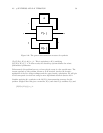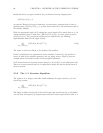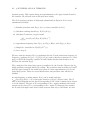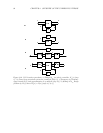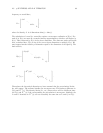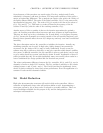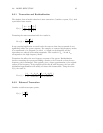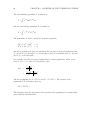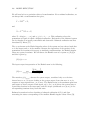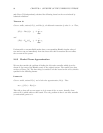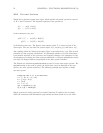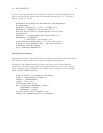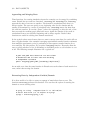
2.6. MODEL REDUCTION 67
We will now look at a particular choice of transformation. For a minimal realization, we
can always find a transformation that gives,
ˆ
Y = TYT
T
=Σ,
and
ˆ
X = T
−T
XT−1=Σ,
where Σ = diag(σ
1
,...,σ
n
)andσ
i
≥0, i =1,...,n. This realization, where the
grammians are equal, is called a balanced realization. Each mode of the balanced system
can be thought of as equally controllable and observable. Balanced realization was first
introduced by Moore [77].
The σ
i
are known as the Hankel singular values of the system and are ordered such that
σ
1
is the largest and σ
n
is the smallest. Because the eigenvalues of the product of the
grammians are invariant with respect to similarity transformations, the Hankel singular
values are system invariants. We will denote the Hankel norm of a system as P(s)
H
and this is given by,
P(s)
H
= σ
1
.
The input-output interpretation of the Hankel norm is the following,
P
H
=sup
u(t)∈L
2
(−∞,0)
y(t)
(0,∞)
2
u(t)
2
.
The notation, y(t)
(0,∞)
, denotes the system output, considered only over the time
interval zero to ∞. So we are looking at the system output, from time zero to ∞,in
response to input signals from −∞ to zero. The Hankel norm is the maximum gain from
past inputs to future outputs. Each signal, u(t) ∈L
2
(−∞,0) drives the system state to
a particular location in the state-space, and the output (considered over (0,∞)) is the
corresponding transient decay from that state.
Balanced truncation involves obtaining a balanced realization of P(s)andthen
truncating the states corresponding to the smallest Hankel singular values. Enns [78]



